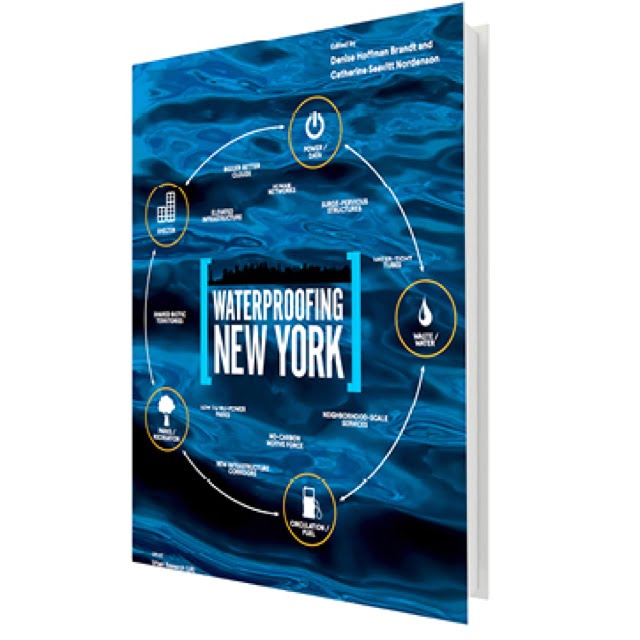With two destructive tropical storms in two years, New York City — like many other global cities — is entering a phase of adaptation to catastrophic climate events which are a result of carbon cycle disruption by human, urban, and industrial practices. Recovery will require more than a simple fix; it will necessitate systemic adaptation to escalating tidal and storm surges, precipitation, and wind events through the construction of new urban landscapes that have the capacity to merge social, cultural, and environmental forces.
Waterproofing New York gathers some of the most influential and thought provoking municipal leaders, engineers, planners, social scientists, and designers to explore the impact of past and future storms on New York City’s infrastructural systems: Water/Waste, Power/Data, Circulation/Fuel, Parks/Recreation, and Shelter. The essays and projects collected here use these urban operating systems to open speculation on possibilities not simply for waterproofing the city but for thinking beyond it to seek wider means of coordinated yet opportunistic, pragmatic, and inventive city design. Waterproofing New York is intended to support an emerging skepticism of a singular “big fix” as well as of the unplanned, uncoordinated, shoring up of individual enterprises and discrete sites that will ensue in the absence of design and civic leadership.
About the Editors
Denise Hoffman Brandt, RLA, is the Director of Landscape Architecture and an Associate Professor at the Bernard and Anne Spitzer School of Architecture at the City College of New York. She is Principal of Hoffman Brandt Projects, LLC.
Catherine Seavitt Nordenson is an Associate Professor of Landscape Architecture at the City College of New York and Principal of Catherine Seavitt Studio.






